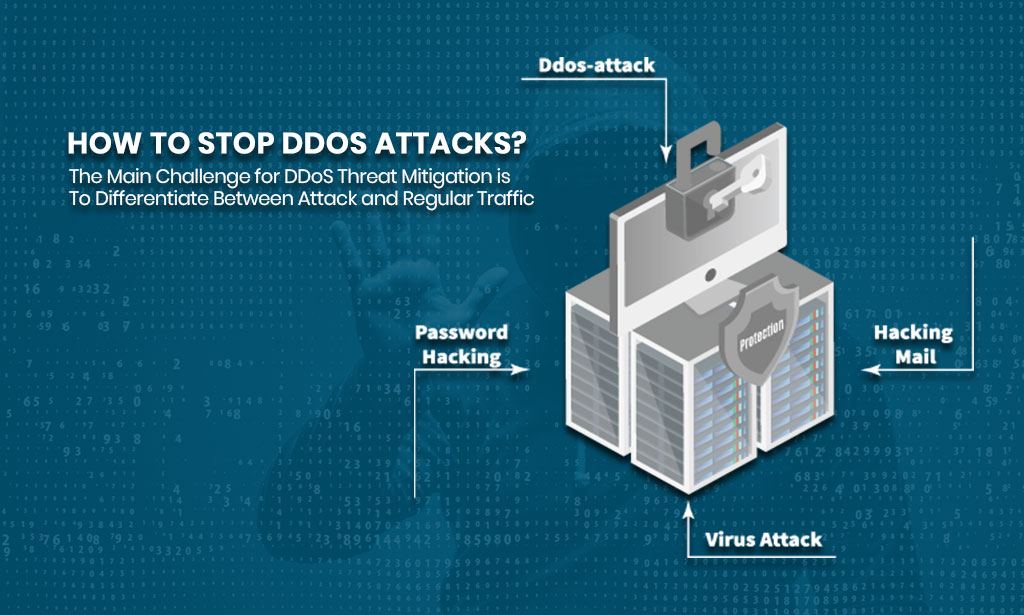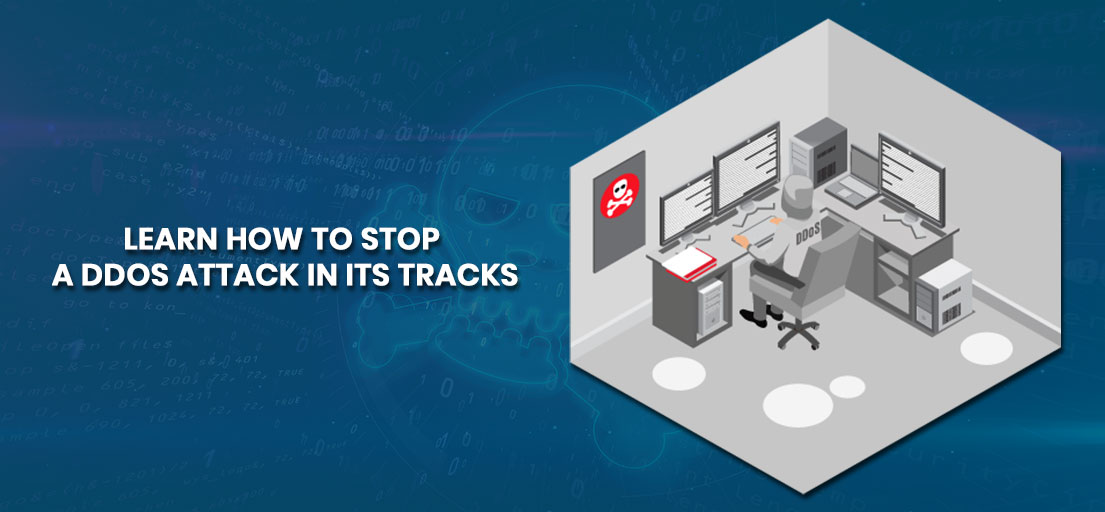How to fix DDoS attack? DDoS prevention has become an important part of the security stack while distributing Denial-of-Service (DDoS) attacks increasingly advanced, stronger, and more widespread in today’s digital world.
At Grid Hosting, will describe How to Stop DDoS Attacks? However, the stopping of DDoS attacks is not an easy task, and it’s different for any organization to find the best way to reduce this kind of malicious activity. That said, you can take some preventive measures to deter effective DDoS attacks.
It is important to understand precisely what a DDoS attack is before we dive in.
What is a DDoS Attack?
DDoS network attacks are also known as Distributed Denial of Service (DDoS) attacks. Such attacks benefit from the particular limitation of capacity that applies to all network services – such as the networks for an organization’s website. The DDoS attack would submit several queries to the web resource targeted – to exceed the server’s ability to deal with several requests and to avoid a site working properly.
Typical DDoS attack targets contain:
- Websites for shopping
- Casinos Online
- Any company or agency that has to provide services online

3 kinds of attacks from DDoS and How to stop DDoS attacks
Though DDoS attacks follow a general trend, a few significant threats are known to companies. Although the basic rules of how they function remain the same, it is difficult to identify and fight such strategies.
You have the best chance of protecting your network from DDoS attacks by understanding what to look for. Three of the most frequent types are here:
-
Volumetric attacks
Like the best-known form of DDoS, these attacks are designed to overload the server by flooding bogus data requests, which prevents legit users from accessing the entire bandwidth.
There are two main attack subtypes in this group. The first is the User Datagram Protocol (UDP), which deals with basic data transfer without verifying this data’s integrity. According to research, more than a quarter of all DDoS events take part in this type of attack since it is simple to set up and run rapidly.
The second is Internet Control Message Protocol (ICMP) flooding that uses echo-request packets to strike a targeted system. This results in blocking the target to get regular visitors and showing them out of service.
-
Application-layer attacks
Application-layer attacks are 2nd most frequent DDoS attack and are becoming increasingly prevalent and target the top layer of the OSI model, the nearest level to the end-user.
This results in attacks that imitate human activity that can be much more difficult to discover than other DDoS threats. Moreover, since such attacks can be started on a single computer, DDoS protection systems, which primarily seek volumetric attacks, frequently do not detect them since they tend to be higher than ordinary types of legal traffic.
Various mitigation approaches are also essential. For instance, CAPTCHA checks can be used to exclude the bots by checking that the firewall and IP credibility database can also be used to determine if the traffic is legitimate.
-
Protocol Attacks
Ultimately, protocol attacks are focused and operated deeper down the stack by destroying network link tables that check new links.
The most popular form of protocol attack is an SYN flood, where a wide range of TCP ‘Initial Connection Request’ packets with spoofed IP addresses is sent to the target. The targeted server would recognize every one of these requests and wait for the requester’s final handshake acknowledgement – which it does not receive. The target server’s capabilities are then easily linked to confirmations that would never come to preclude their use for genuine requests.
How to stop DDoS attacks?
How to stop a DDoS attack in progress? The main challenge for DDoS threat mitigation is to differentiate between attack and regular traffic. A DDoS attack involves a range of techniques to counteract various pathways. The further complicated the attack is, the more impossible it would be to isolate the traffic from usual traffic — the goal of the attacker is to mix it as much as possible to make prevention as impractical as possible.
Attempts to mitigate traffic that indiscriminately require lowering or restricting it can throw out successful traffic and may also alter and customize the attack to bypass defensive measures. A layered approach is the most advantageous way to solve a difficult effort to interrupt it.
Route of the BlackHole
How to stop DDoS attacks on router? A blackhole route and funnelling traffic to that route is one workaround open for almost all network administrators. All legal and malicious network traffic is diverted to a zero route in its simplest form, while blackhole filtering is done without precise constraint criteria. If a DDoS attack occurs on an internet property, the Internet Service Provider (ISP) may use all traffic on the web for protection in a black hole.
Limitation of rate
It also helps to mitigate denial of service attacks by limiting the number of requests that a server receives within a given period. While rate limitation is helpful when web scrubbers are slowing down to steal content and mitigate attempts to log in by brute force, a complicated DDoS attack is probably not necessary on its own. However, rate limiting is a valuable part of an efficient approach to mitigating DDoS.
You might also like to read: How to secure you online privacy and security
Web Application Firewall
A WAF is a technique that can help to alleviate a DDoS attack on the application layer. The WAF will act as the reverse proxy to shield the targeted server from certain kinds of malicious traffic by placing a WAF between the Internet and an origin server. Application layer attacks can be prevented by screening applications based on several guidelines used to classify DDoS resources. The ability to enforce custom rules rapidly in response to an attack is a core value of a successful WAF.
Conclusion
DDoS attacks evolving and are increasingly damaging to companies, as many of those in programming. The attack dimensions are increasing, and the latest DYNDNS attack and GitHub attack of 1,2 TBs and 1,35 TBs are reduced from 150 requests per second in the 1990’s – which would have brought an era server down. Two main productivity outlets worldwide were to be disrupted in the two assaults.
Here at Grid Hosting, I have already defined how to stop DDoS attacks. These solutions are equally suitable for How to stop DDoS attacks on ps4? And how to stop DDOS attacks on Xbox?
The attacks employed new tactics to reach their large amounts of bandwidth. For example, the attack on Dyn used an exploit found in IoT devices to build a botnet, known as the Mirai Botnet Attack. To launch the attack, Mirai used open telnet ports and default passwords. The attack was a significant weakness with IoT gadgets proliferating.







